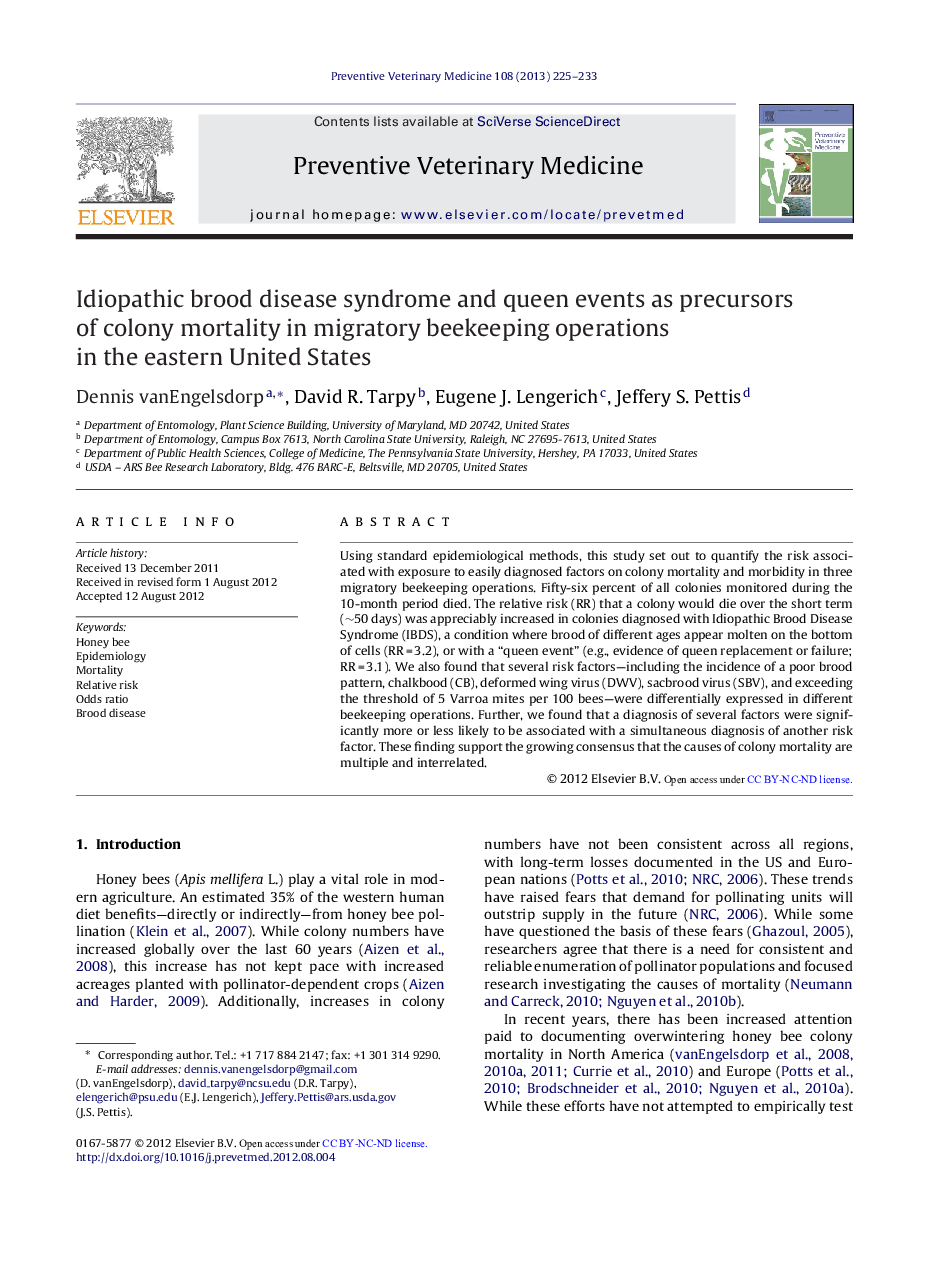| کد مقاله | کد نشریه | سال انتشار | مقاله انگلیسی | نسخه تمام متن |
|---|---|---|---|---|
| 5794009 | 1554185 | 2013 | 9 صفحه PDF | دانلود رایگان |
Using standard epidemiological methods, this study set out to quantify the risk associated with exposure to easily diagnosed factors on colony mortality and morbidity in three migratory beekeeping operations. Fifty-six percent of all colonies monitored during the 10-month period died. The relative risk (RR) that a colony would die over the short term (â¼50 days) was appreciably increased in colonies diagnosed with Idiopathic Brood Disease Syndrome (IBDS), a condition where brood of different ages appear molten on the bottom of cells (RRÂ =Â 3.2), or with a “queen event” (e.g., evidence of queen replacement or failure; RRÂ =Â 3.1). We also found that several risk factors-including the incidence of a poor brood pattern, chalkbood (CB), deformed wing virus (DWV), sacbrood virus (SBV), and exceeding the threshold of 5 Varroa mites per 100 bees-were differentially expressed in different beekeeping operations. Further, we found that a diagnosis of several factors were significantly more or less likely to be associated with a simultaneous diagnosis of another risk factor. These finding support the growing consensus that the causes of colony mortality are multiple and interrelated.
Journal: Preventive Veterinary Medicine - Volume 108, Issues 2â3, 1 February 2013, Pages 225-233
